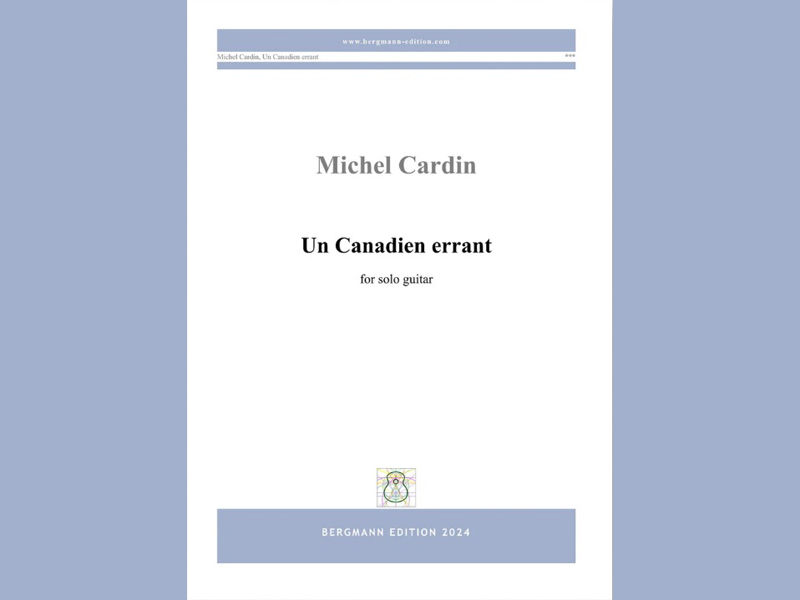Emil Tcheparov : Dimensionen : Das Leben in 11 Kompositionen : Bergmann
- chrisdumigan
- Nov 12, 2021
- 3 min read
Updated: Jun 4, 2022

Emil Tcheparov
Bergmann Edition: 26 pages
Bulgarian composer /player Tcheparov has apparently written 300 compositions, but this happens to be the first I have ever seen. Split into 11 separate compositions they tell the story of life.
The opening piece Die Vierte Dimension – Zeit (The 4th Dimension – Time) spends the entire piece with an open 5th A underneath whatever is happening above. It changes rhythms throughout but there are no other bass notes at all in the piece .Above it a bouncy theme in thirds sets the scene, occasionally changing into 4th at times, depending on the harmony involved. The fourths then take over for the second theme, which moves gradually up the fingerboard before diving around a bit further along. The next idea brings in chords but this time the fourths are grouped with open strings .At the end of this the opening idea returns and goes straight into the coda where the open A makes a final appearance.
Die Sage – Vergangenheit has a dropped D 6th, and after an introduction of an arpeggio idea for the first 8 bars, reverts back to a theme in 3rds and 4ths over open strings, this time Nos. 4, 5, and 6.Some of the off – beat rhythms between the two voices change over the next few bars, before a new theme, a mixture of 5/4 and 4/4m enters over larger chords until the opening idea, slightly varied returns leading to the coda.
The 3rd piece Regional Express 5 – Bewegung begins with a rocking open B alternating with a melody on the lower strings but which is often high up the fingerboard to create a melody higher (often) than the open B. Incidentally bars 10 and 14 I think are meant to be identical and yet the third note in each bar is first an F natural, and then an F#. The natural F sounded wrong; especially as it was above a low F# bass, so that might be a misprint. After that a particular pattern of notes appears that goes right to the end, varying its key structure along the way, an idea that I had begun to notice in the previous pieces.
This was only exacerbated with the next piece Der Weg zu dir – Liebe, which begins with again a bass melody underneath (this time) two open strings, a B and a top E. After a few bars another fretted note is involved in the arpeggiation, but the use of open strings atop a lower melody in a harp like style was starting to be noticeable as a style that this composer used time and again.
It occurs in the next movement , Harmonie – Vollkommenheit, in the middle , but there was a noticeably different opening , full of harmonics , and then some block chord episodes making this one of the best of the set, and also one of the most tricky to play.
The next three pieces all had the same pattern of open strings ringing against fretted notes, and the lack of originality in their style was beginning to pall. The rest of the pieces were pleasant enough, but by now I had begun to lose interest as the lack of variety in the pieces really made an impact on me.
Don’t get me wrong, these pieces are nice, friendly, and warm in their harmonies, but the number of pieces that moved in exactly the same way, used the same guitaristic traits, and therefore all sounded very similar in many places was a little too much for me but you might think entirely differently
Chris Dumigan




Comments